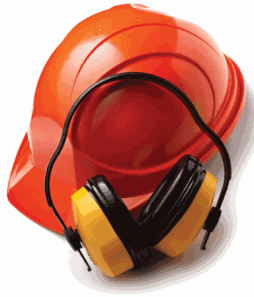
The AFR’s Chris Joye argued over the weekend that:
The pessimism about Australia’s fundamentals focuses on four things: the fading mining investment boom (ignoring the export expansion it is unleashing); questions about our trading partners’ prospects (in particular China and Japan); the assumption neither the consumer nor housing will fill the growth hole left by tapering investment; and, finally, concerns the RBA and Treasury have expended too much ammunition — via record low rates, big structural deficits and a gross government debt-to-GDP ratio approaching 1993 peaks — before a real downturn.
Hmmm, well, I wouldn’t call it pessimism. I’d call it risk analysis. Moreover, who is ignoring the ramp up of mining export volumes? Straw men aside, there is a fundamental proposition here that deserves serious attention. Chris Joye puts it:
So should investors seek to shelter their money from this turbulence? And is there anything that can really insulate them? The answer depends on your age and risk appetite: if you are saving over a multi-decade horizon, you should dismiss daily or monthly movements in asset prices.
If you find it difficult to sleep at night amid these ructions, there are at least three complementary opportunities to consider.
He sensibly cites bank deposits and bonds before coming to housing:
A final safe harbour to consider is the interest rate sensitive housing sector. I’ve argued for years that Australia’s housing market could be a hedge against a slowdown in the resources boom, falling commodity prices and cheaper interest rates.
We have certainly seen a steady recovery in key housing activity variables since mid last year. New home loan approvals have been lifting. Clearance rates in the two largest auction markets, Sydney and Melbourne, are back to boom-time conditions. And house price index providers report that home values are higher than they were 12 months ago.
Using the terminology of “safe harbour” pretty clearly delineates this discussion as one about defensive assets. Let’s first determine what a defensive asset is. ASIC defines it this way:
Cash or fixed interest investments that are generally low risk and less volatile than growth investments.
Does property meet those criteria? Capital losses are a virtual impossibility in deposits (barring an asteroid strike) and extremely unlikely in a bond because you’re still at the top of the creditor pile. That’s the point of accepting a lower yield for “safe haven” status. It preserves your capital. Property clearly does not qualify.
That is not to say that in previous periods of volatility Australian property hasn’t performed well as interest rates fell. Two prominent examples of striking performance during difficult periods was the Asian Financial Crisis and Global Financial Crisis, when monetary and fiscal stimulus sent property prices bonkers. But the returns were not secure and steady income. On the contrary, they were in tear away capital gains and falling yields. Chris Joye himself exposes this confusion when he extols the virtues of 95% leverage:
A key benefit of housing investment is that banks will lend at much higher levels (up to 95 per cent) for vastly longer terms (30 years) at far lower rates than business or personal borrowers. The key risk is about one in 10 people lose money when they trade their property.
That kind of leverage is neither a safe harbour nor defensive.
Don’t get me wrong, if you want to punt on property going up as the mining boom “slows” then go right ahead. Interest rates are very likely to fall further and there is always the chance that the first thing that Mr Joye’s political ally Joe Hockey will do upon assuming office is install another first home buyer grant on established property. It would work to boost prices short term, though not as well as last time, I suspect,
But I invite you consider the risks. There is an argument that Australia’s high property prices are implicitly supported by the mining boom. If the mining slow down morphs into a mining bust then property may well be drawn into the fallout. The RBA’s current easing campaign has so far failed to generate anything like the property market returns of previous cycles and a jump in unemployment would retard even lower rates vis-a-vis property prices.
On fiscal support, since returning to power in the states, Liberal governments have rightly reversed Labour’s FHB incentives for existing housing and put them instead on new housing. When the Howard/Costello regime wanted to stimulate housing it only did so on new homes. If Joe Hockey feels the need to stimulate housing, and has any economic integrity, he will use the same method.
To say the least, the 5% yield on property (which roughly halves with holding costs) doesn’t justify the risks of capital loss. If you’re punting on capital gain or extraordinary fiscal intervention then that isn’t defensive either. The history of property returns in down times makes it appear a “safe harbour” but it isn’t. It’s a leveraged capital punt on counter-cyclicality.

